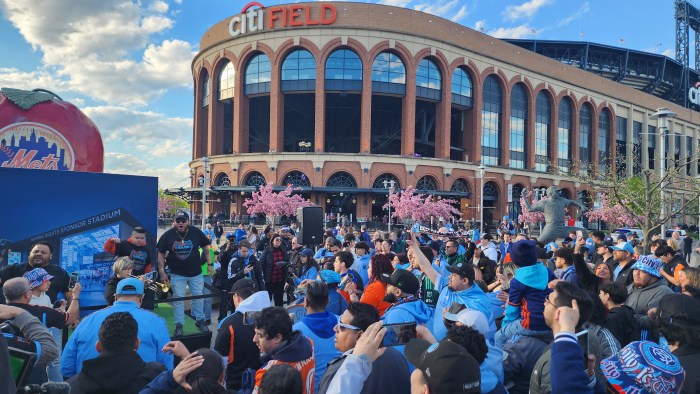The overall population of southeast Queens rose nearly 12 percent in…
By Betsy Scheinbart
The black population in southeast Queens rose nearly 10 percent in the past 10 years, increasing the number of blacks to more than seven out 10 residents, according to the 2000 Census.
The overall population of southeast Queens rose nearly 12 percent in 10 years, to 373,745. That figure includes the populations of Brookville, Cambria Heights, Hollis, Jamaica, Laurelton, Queens Village, Rosedale, South Jamaica, Springfield Gardens, and St. Albans.
The 2000 Census found the total population of Queens to be just over 2.2 million, a growth much higher than any other borough and due in part to Asian and Hispanic immigrants.
“There is an immigrant influx all over Board 12,” said Yvonne Reddick, the district manager of the community board covering Jamaica, South Jamaica, Hollis, St. Albans and the northern half of Springfield Gardens.
The northern half of Springfield Gardens has the highest concentration of black people in Queens with more than nine out of 10 residents, according to the Census.
“It is a stable community with a lot of old-timers,” Reddick said. “Even when the children grow up, the parents stay.”
The Southern State Parkway separates north and south Springfield Gardens in the east, but the border shifts to 140th Avenue to the west. Springfield Boulevard separates Springfield Gardens from Laurelton and Baisley Boulevard acts as the border of South Jamaica.
The most dramatic population change in southeast Queens occurred in Rosedale, where the black population more than tripled during the past 10 years, increasing from 3,639 to 11,377, according to Dr. Andrew Beveridge, a demographer at Queens College in Flushing.
“The area has improved,” said Lauretta Gordon, who has lived in Rosedale for 30 years. She said blacks were not exactly welcomed with open arms to the area three decades ago, but now “definitely, blacks have increased.”
“You can tell it’s increasing just by walking on the street,” Barry Wilson said of the black population while walking along a commercial strip of 243rd Street in Rosedale.
Rosedale is located in the southeastern corner of Queens, bordering Nassau County to the east and John F. Kennedy International Airport to the west.
Beveridge’s figures have Rosedale separated from Brookville in the north by 149th Avenue and from Laurelton by Brookville Boulevard and 246th Street.
In contrast to Rosedale, the black population has decreased in Jamaica by more than 4,000; from 36,191 to 32,144.
“A lot of old-timers relocated out of state and retired to a new location,” Reddick said of the decline in black population in Jamaica. “Some of them I know personally and they are living very comfortably.”
More than 1,000 immigrants from Central and South America have contributed to an increase of more than 4,000 Hispanic people in Jamaica. According to the Census, more than one in four Jamaica residents is Hispanic.
Also contributing to the growing diversity was the increase by more than 2,000 Asians in the area, making one in 10 Jamaica residents Asian.
In Laurelton, City Councilwoman Juanita Watkins (D-Laurelton) has not noticed a dramatic change in the past decade. A 27-year-resident of the area herself, she said major “white flight” took place in the 1960s and ‘70s.
“There is not much change in Laurelton,” Watkins said. “There is not much building, but where new houses are built, black families have moved in.”
Reach reporter Betsy Scheinbart by e-mail at Timesledgr@aol.com or call 229-0300, Ext. 138.
































